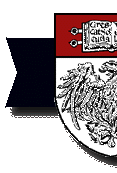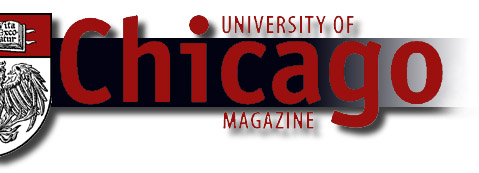 |

College
Admissions on course, says Behnke
The University’s Office of College Admissions boasts that this
year’s entering class looks to be one of the school’s brightest
and most geographically diverse ever.
When Evanston native Emily Peters visited the U of C campus last
October, she knew it was the right place for her. “I applied
to and visited other schools,” she says, “but I never
got that intense ‘I want to be here’ feeling that I did
at Chicago.” Peters, now a first-year, says she was “incredibly
impressed” by the rigor of a math class she attended. She even
enjoyed the social side of College life: “The overnight was
fantastic. Chicago has a reputation of being a place where no one
has any fun. But I had a lot more fun than I had on other college
visits, when my hosts either took me to bars or told me I’d
have to find something else to do.”
Peters isn’t the only high-schooler Chicago has recently
impressed. Compared to past years, more students from more regions
of the country vied for a spot in Chicago’s entering class.
And they brought higher SATs and GPAs with them. “This may
be the best class Chicago has ever seen,” says Michael Behnke,
vice president and associate dean for enrollment.
Dean of College Admissions Ted O’Neill, AM’70, attributes
the quality to an applicant pool that increased by 24 percent from
1998 to 1999. Applications from the Southwest, a “traditionally
hard to crack” region, says O’Neill, increased by 55-percent
last year, while the South and the West both had 32-percent increases.
“These regions are very state university–oriented,”
O’Neill says, so the increases are “very encouraging.”
SAT scores among members of the entering class rose by 64 percent
in the 1500 to 1600 range, while 47 percent more students came from
the top five percent of their high-school classes. At the same time,
Chicago’s acceptance rate went down from 61 percent in 1998
to 48 percent in 1999—the first time the College’s acceptance
rate has ever been below 50 percent. More students also committed
themselves to Chicago: Its yield—the number of students accepting
offers of admission—was 32.2 percent this year, up from 30.2.
“This is very reassuring,” says Behnke. “When we’re
attracting students with significantly stronger academic credentials,
one might expect the yield to go down, since these are students
with more choices.”
The news bodes well for an admissions office that has been given
a mandate to show that it can maintain quality standards as the
College begins to expand. The office has been reorganized under
a three-pronged plan aimed at reaching more students earlier, giving
them more compelling messages about Chicago, and expanding the on-campus
prospective-student programs. “In geographical areas where
we’re not as well known, by having a greater outreach, we’ve
really made a dramatic difference,” says Behnke. “These
are places where our name recognition is not as high as that of
our peers.”
Behnke says the key to recruitment is reaching students much earlier,
and so Chicago has turned its attention to high-school sophomores.
In 1998, the College processed less than 14,500 sophomore mailings.
That number increased more than threefold in 1999 to a little more
than 45,000, and this year will double again—to more than 113,000.
“One of the nice things that we’ve learned is that by
re-emphasizing the old Chicago message and delivering it more widely,
we get a lot of takers,” says O’Neill. “We always
wanted to get the word out farther. It’s such a good story,
people should hear it.” Chicago has also greatly expanded its
prospective-student programs. The University held half-day visit
programs once a month during the last academic year and increased
its summer interviewing by 52 percent in 1998.
Yet despite the shift in strategy and overall positive statistics,
some potential Maroons still slipped away. Aaron Shaw, featured
in April’s Newsweek article on Chicago admissions, headed to
Stanford this fall. While Chicago was one of the New York native’s
top choices academically, he viewed the atmosphere as too restrictive.
“Stanford was just a better fit for me,” he explains,
noting the appeal of Stanford’s sprawling campus green and
outdoor-oriented social life.
Behnke is counting on the University’s physical restructuring
plans to help draw a greater number of students like Shaw to Chicago.
“The facilities to support student life have not been strong,”
Behnke notes. “We’re going to be sending a different message
in the future. It won’t be that academics are any less important,
it’s just that the programs and facilities to support student
life will also be very good.”—B.B.
|



